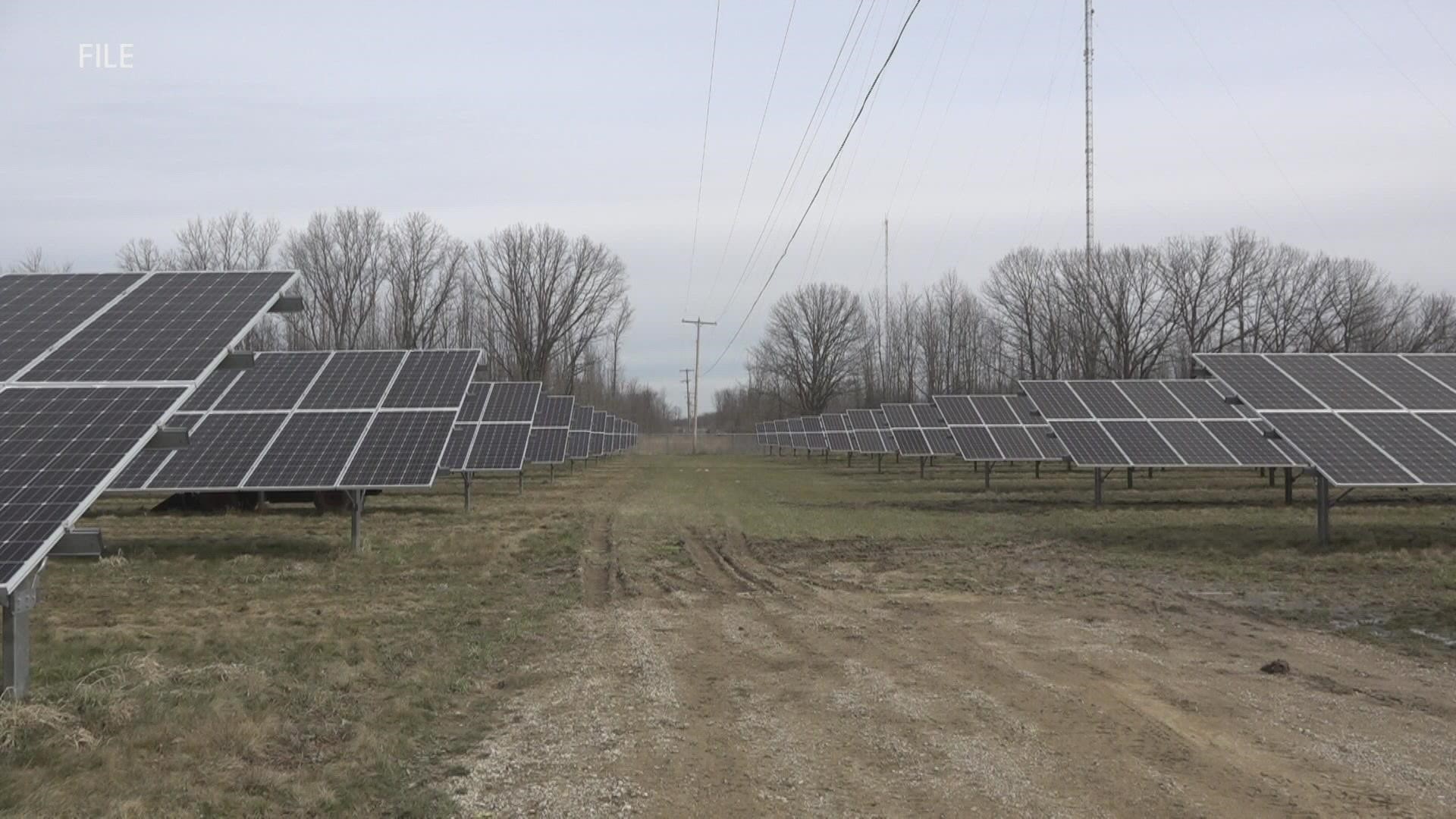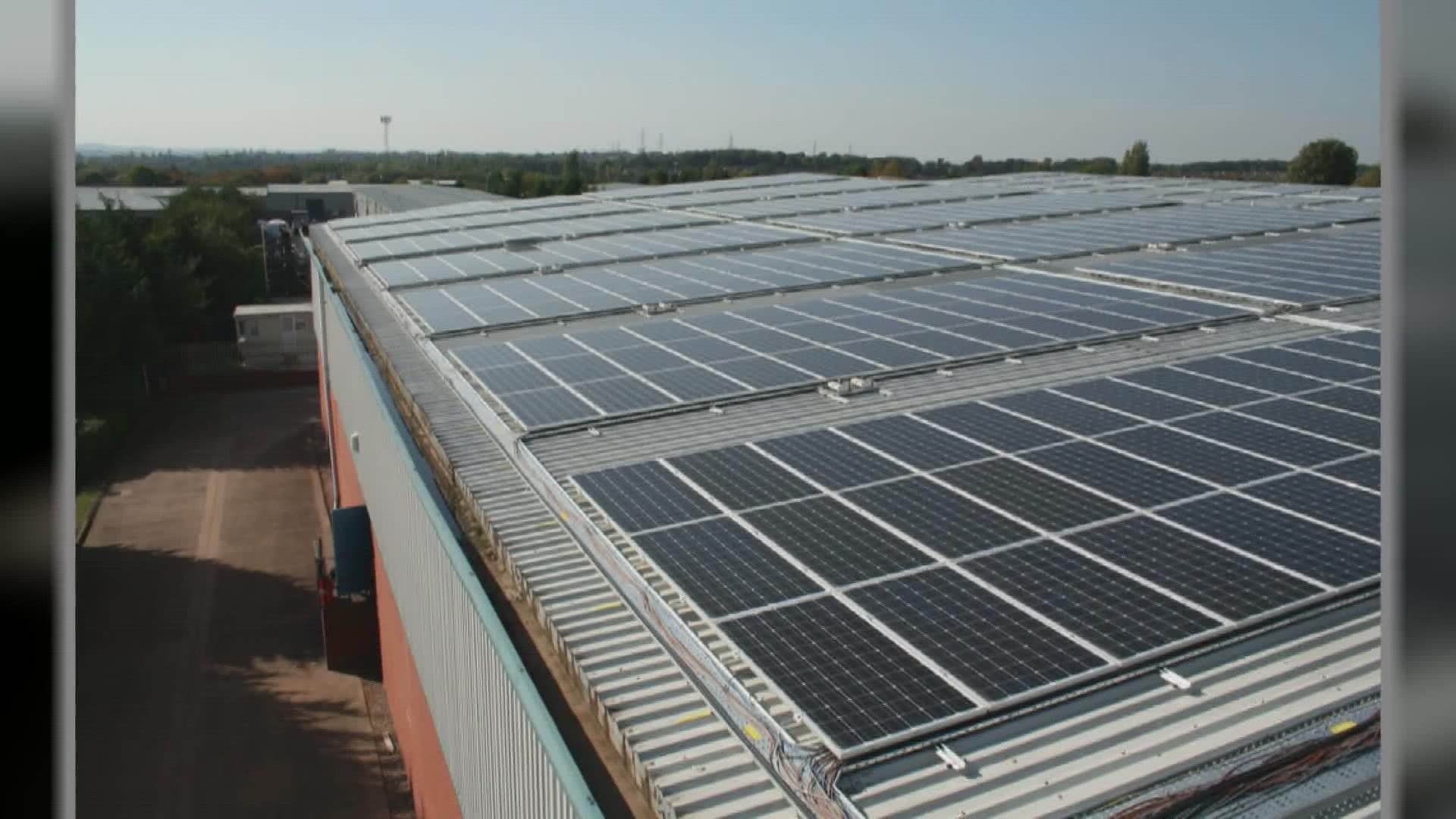GRAND RAPIDS, Mich. — In continuing coverage on the push to go green…
13 ON YOUR SIDE reported last week on a study just out from Michigan State University, breaking down the potential statewide economic impact of increased solar energy generation.
Monday, several of Michigan's largest power providers announced they would join forces in a shared drive to meet that goal and ultimately, they said, save customers some green in the process.
“Bottom line, it’s a win-win for all those involved,” said Sarah Nielsen with Consumers Energy via a video briefing held Monday.
DTE and Consumers Energy launched what they dubbed a first-in-the-nation partnership. MI Community Solar is geared to cater to customers on every rung of the socio-economic ladder and push harnessing the power of the sun to the forefront of the local energy solution.
“They have the opportunity to, A, decarbonize their electric footprint and, B, actually receive credits on a monthly basis,” explained Brian Calka, DTE’s director of Renewable Energy Solutions.
So just what is community solar and how does it work?
As explained last week—most everyone is likely familiar with the glossy panels installed on the roof or in the backyard of a private residence.
A personal array isn’t, however, always a viable option.
That’s where community solar steps in: Pooling resources with a larger array capable of pushing clean, green energy to multiple buildings or customers.
Both power providers have been experimenting with a subscription-based service which charges individual solar investors a monthly rate to go green, offsetting a portion of that extra charge with a credit that appears on a customer’s monthly bill.
“This is definitely a product that’s about investing in the future and helping us to get there faster rather than being a money-making opportunity,” Nielsen said. “But, it does give you something back that way and helps you participate in the market.”
Shelling out billions to curb carbon in the coming years, inclusivity would be a key facet of the updated grid moving forward, the utility companies said.
Among other things, the principle could entail savings for those with lower incomes through various pilot programs.
“The program is available to everyone, which is key,” said Knox Cameron, DTE’s manager of Renewable Energy Sales. “We make it available from a cost effective standpoint for everyone.”
“Low income customers have the potential to receive bill reductions on a monthly basis,” Calka said.
As demand climbs, the investment would be put toward new arrays to meet increasing energy needs.
Abandoned industrial parks and so-called brownfield sites could prove ideal future solar sites, in that they generally don’t require as much work to redevelop.
The announcement came as both utilities worked to transition to a carbon neutral portfolio, Consumers Energy by 2040 and DTE, a decade later.
Consumers’ Solar Gardens program is still in its early stages.
A spokesperson said the utility had somewhere in the neighborhood of 900 subscribers at the time of publication.
DTE has a larger program at the moment, dubbed MIGreenPower, with around 40,000 who have signed on.
Both were expected to see substantial growth as the power providers approach those neutrality goals.
DTE and Consumers Energy also said they’d be launching a statewide education campaign as part of Monday morning’s announcement to give the strategy a boost.
For more information concerning DTE’s program, click here. For more information on Consumers Energy’s program, click here.
Related video:
►Make it easy to keep up to date with more stories like this. Download the 13 ON YOUR SIDE app now.
Have a news tip? Email news@13onyourside.com, visit our Facebook page or Twitter. Subscribe to our YouTube channel.


